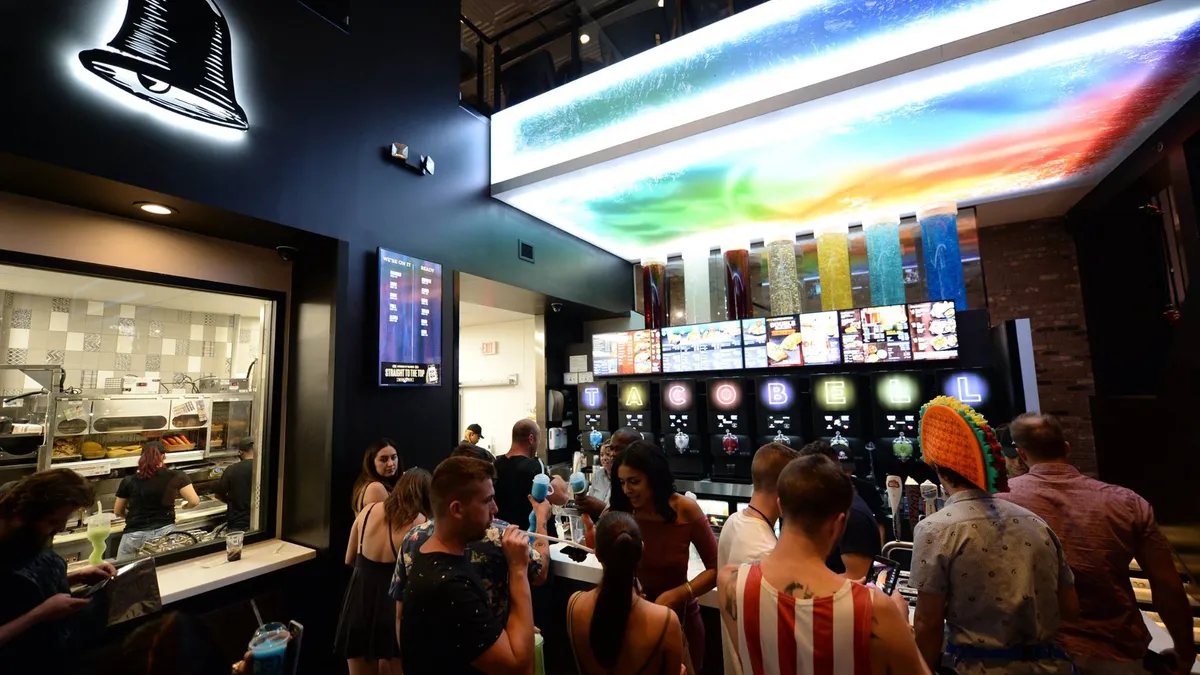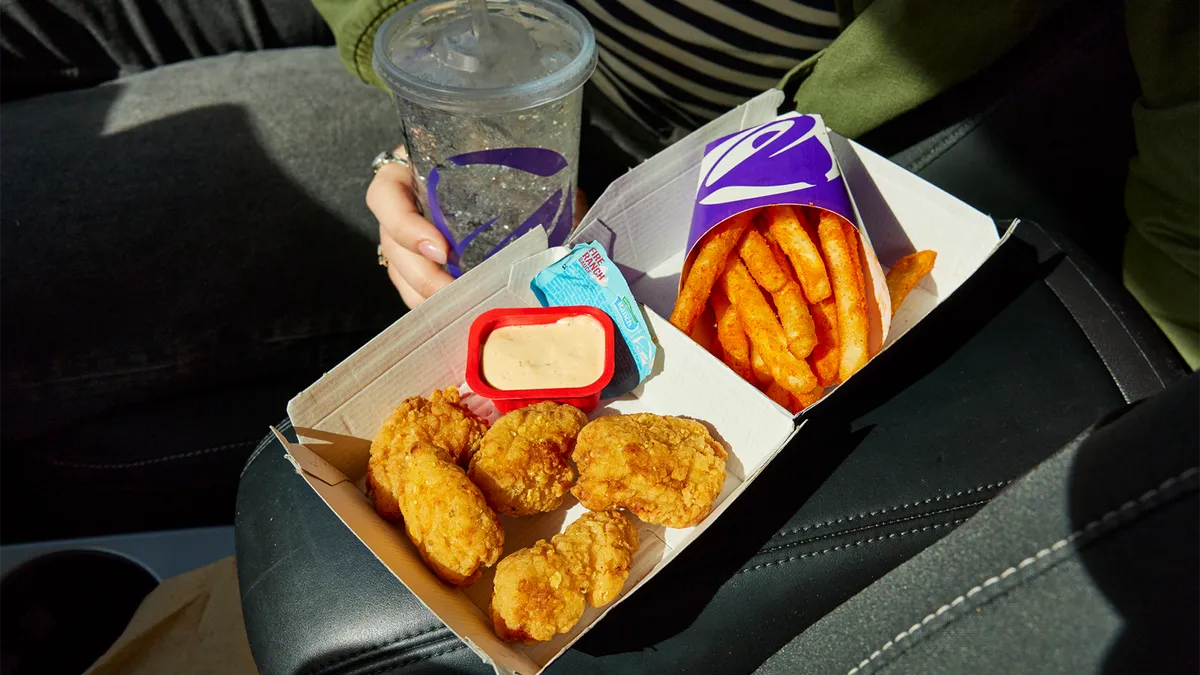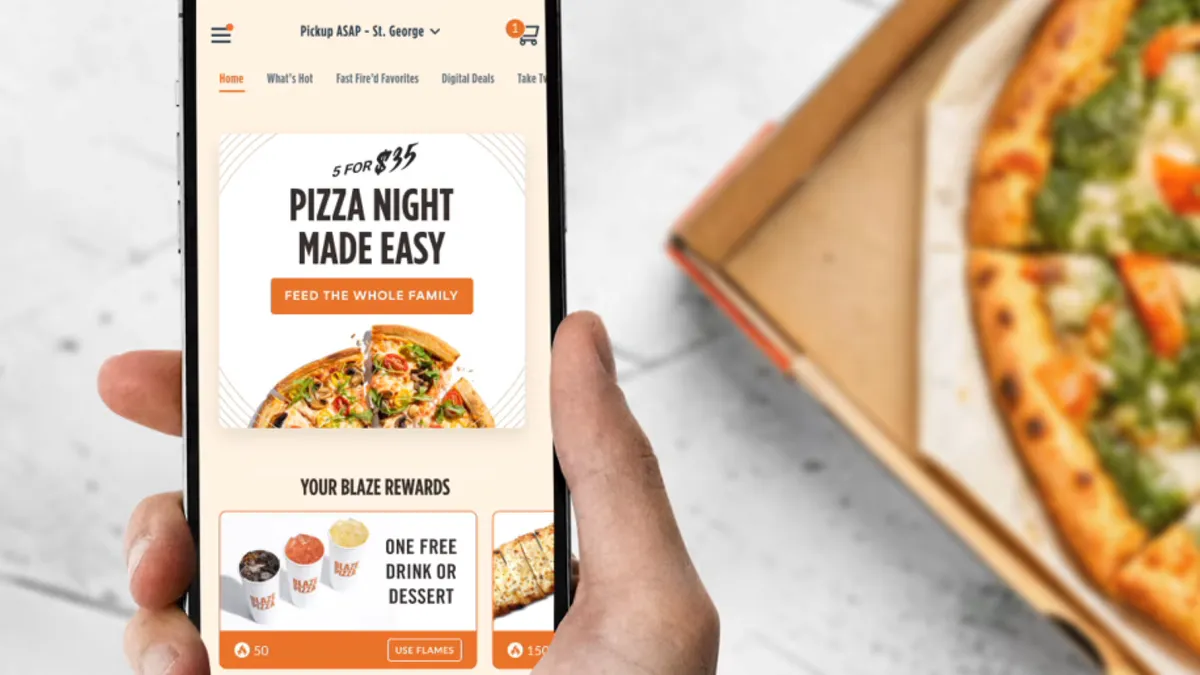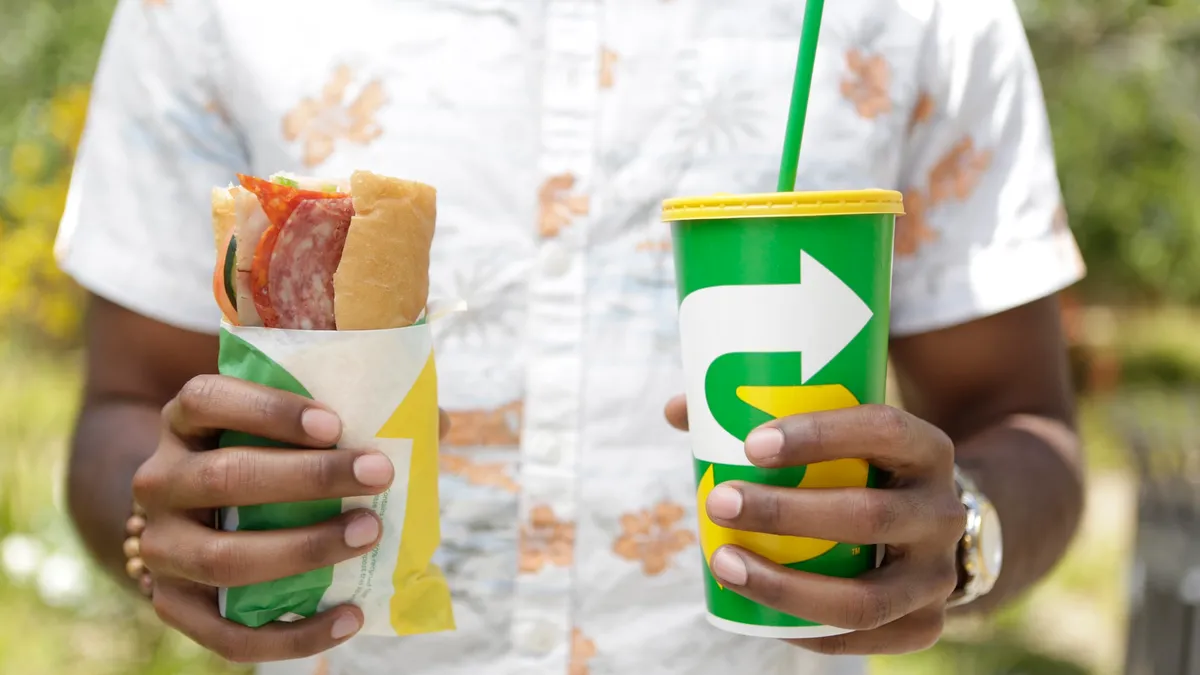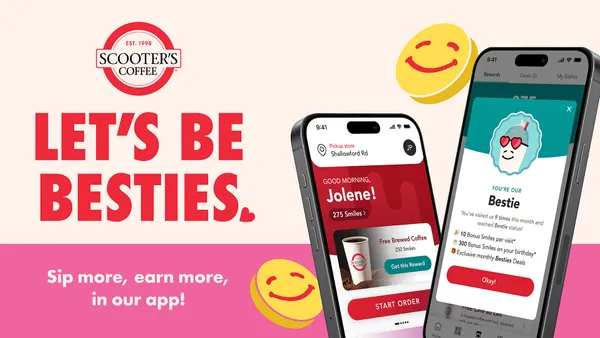When fast casual concepts started making their way onto the restaurant scene in the 1990s, they barely registered a blip on the industry's radar. But the fledgling category quickly evolved into a formidable competitive set in the early 2010s, and the $800 billion restaurant industry — particularly the quick-service (QSR) players — had no choice but to step up their game in response.
Fast casuals are typically defined as limited-service concepts that offer more service, have a slightly higher price point than quick-service restaurants and offer what's perceived as higher quality food. The category has grown at a compound annual growth rate of 7% throughout the past five years — the only U.S. restaurant segment that has increased traffic in the past five years, according to NPD Group.
Market research firm Technomic predicts that fast casual restaurants will continue to grow by 7.5% this year, while QSRs are expected to grow by 3.5% and casual and fine dining concepts by 2.7%.
Fast casual, in other words, is the golden child in an industry that has experienced struggling sales and intensifying competition from grocery stores, convenience stores and meal kits. Andy Wiederhorn, CEO of Fat Brands, attributes the category's success to consumers who simply want more bang for their buck.
"Customers, we have found, are going to pay a little more for a better experience and better food quality and that is why fast casual has done so well," Wiederhorn told Restaurant Dive. "QSRs owe it to their customers to improve their game. QSRs rode comfortable for so long, but now they're being forced to up their game."
A quick glance at the QSR segment indicates that's exactly what they're trying to do. A big chunk of QSRs — including McDonald's, Wendy's and Taco Bell — have initiated comprehensive brand remodels since the fast casual onslaught earlier this decade. Often, these refreshes have included elements that are a far cry from the days of friendly clowns selling burgers consumed on red and yellow plastic tables.
"Customers, we have found, are going to pay a little more for a better experience and better food quality and that is why fast casual has done so well."

Andy Wiederhorn
CEO, Fat Brands
McDonald's, for example, is in the process of rolling out table service, among other significant changes. Subway has started offering charging stations for guests, and Wendy's began overhauling everything from its logo to its packaging when it first introduced its "A Cut Above" restaurant design in late 2013-to-early 2014. At the time, then-Wendy's CEO Emil Brolick admitted his brand’s objective was to better compete with fast casual concepts. Wendy's has since experienced 22 consecutive quarters of same-store sales growth.
There's also Taco Bell, which continues to grow its Cantina concept — first launched in late 2016 — which includes a bar, retail experience, VIP lounges, DJ entertainment, event spaces and more. There are now 17 Cantina locations, with a goal of further expansion through 2019.
The Cantina concept is a significant shift from Taco Bell's smaller, traditional fast food concept that dates back to 1962. But Denise Lee Yohn, brand leadership expert and author of "What Great Brands Do," said such an approach makes sense for this brand specifically.
"These developments have advanced the [Taco Bell] brand's core in fun, craveable food at low prices. It serves as a great example of how to innovate while increasing the brand’s appeal and relevance versus alienating customers," she told Restaurant Dive.
These types of comprehensive changes risk turning off loyal fans who may prefer their traditional fast food experiences. Companies that innovate too far from the core of their brand risk diminishing or damaging their brand equity, Yohn added. Still, such innovation is practically a necessity now as younger generations demand more from their restaurants and continue to gain unprecedented spending power.
"QSRs must innovate in all areas of the business and evolve if they want to meet customers' ever-changing and elevated expectations, especially in such a competitive industry," Yohn said.
Brands innovating from their core
McDonald's may be the most noteworthy example of this evolution. CEO Steve Easterbrook first started talking about the company's "Experience of the Future" (EOTF) strategy in 2016. The initiative, aimed at winning back McDonald's core customers, includes upgrades such as self-order kiosks, dessert counters, new uniforms and table service. The focus on table service is quite the shift for a company that generates about 70% of its business at the drive-thru. Because of this potential disconnect, it may take some time for loyal consumers to warm up to such an approach.
"McDonald’s brand is so rooted in speed and convenience that its new table service must align and advance that core instead of being a way to try to take the brand up-market," Yohn said.
The company didn't respond to inquiries about how its table service business has been performing so far, but EOTF restaurants — which now make up a little more than one-third of the U.S. system — have yielded mid-single digit sales boosts, according to the company's most recent earnings call. However, Easterbrook conceded that the company is "not yet where we need to be with regaining more customer visits."
Lee Peterson, executive vice president of thought leadership and marketing at WD Partners, isn't convinced that table service is the silver bullet to solve McDonald's guest count declines, but feels the effort may be necessary nonetheless.
"Consumers are more knowledgeable now and that is definitely leading to these changes," Peterson told Restaurant Dive. "We do a ton of research and we have found that there is such a different way that younger consumers look at things. It's astounding. They don’t need clown colors. They want simplicity and quality and a more sophisticated space to eat."
McDonald’s isn't the only brand enticing diners to stick around for a while. Some Chick-fil-A locations, for example, have added Kallpod devices, which allow dine-in guests to call for a server whenever they want via the push of a button from their table. Texas-based manager Devin Deshotel told CNBC that revenue has increased 500% since the Kallpod installation at his two restaurants in Wallisville and Evalde, Texas. He attributes this staggering increase to the device giving diners a simpler way to place a second order.
"[Consumers] don't need clown colors. They want simplicity and quality and a more sophisticated space to eat."

Lee Peterson
Executive vice president of thought leadership and marketing, WD Partners
Subway is re-imagining the design and layout of their restaurants to make the experience more efficient and inviting for guests – whether they want to grab something to go, or they want to dine in. Its Fresh Forward design was introduced in the summer of 2017 and results have been positive so far. On average, restaurants with the new design experienced a sustained uptick in sales and traffic, and guest reaction has been favorable, according to Patrick Rose, Subway’s senior manager of décor, design and equipment — global.
In a sampling of Subway restaurants with the Fresh Forward design in the United States (versus ones without it) gross profit has lifted nearly 11% and traffic has lifted more than 8%.
Consumers, in other words, are responding well to the new design, which is aimed at "creating a modern guest experience through bold décor, digital menu boards and kiosks, vegetable displays and curated music," according to a Subway spokesperson — not necessarily the brand persona Subway typically conjures up. Still, Rose said the company was never worried about alienating its most loyal guests when it rolled out its new design.
"We're always listening to our guests and, when creating the Fresh Forward design, we sought input and feedback from guests and our franchise owners to develop a restaurant environment that met their needs and expectations," he told Restaurant Dive.
Though Subway doesn't have quantitative data about whether or not its new features are causing diners to linger a little longer, Rose said the qualitative feedback about the company’s new features has been very positive.
"The USB outlets — in conjunction with the free WiFi — lets guests know that they are invited to sit back, relax and stay a while. Guests have shared that the features made their Subway restaurant feel like home or a place they can eat, plug-in and get work done. Our goal is to create the best possible experience for our guests through great food and service in a contemporary atmosphere," he said.
A risk of alienation
Early positive results aside, such a massive change in direction can cause a bit of a disconnect for some customers, especially brand loyalists.
"These efforts are somewhat ironic considering that most of the [QSR] business comes through the drive-thru and the in-restaurant experience is almost secondary," Peterson said. "There are risks, but if consumers believe what [brands] are doing and the approach reaches new customers, then it's worth it. Brands used to avoid alienating the existing customer, but we’re now at a point where they have to take that chance. They need to go get new customers.”
An abundance of research illustrates just how significantly younger generations are changing the food landscape. In a nutshell, they want easy, customized, healthy and adventurous dining experiences.
"Easy" is perhaps the biggest driver behind contemporary consumers’ motivations. This is illustrated in WD Partners’ research, which breaks down the consumer set into two categories: Digital natives and digital immigrants. Digital natives were born in 1990 and after, while digital immigrants are those over the age of 46.
"Brands used to avoid alienating the existing customer, but we're at the point where we need to take that chance. They need to go get new customers."

Lee Peterson
Executive vice president of thought leadership and marketing, WD Partners
“Digital natives were born with technology. They're used to pressing buttons and getting anything they want when they want it. That has caused the consumer to want food, especially [food] from QSR, in a different way," Peterson said. "They also like to try new things. There has been a huge shift in the consumer and there's pressure on these existing brands to do something new and fresh to try and win in the fight for share of stomach.”
Fast casual brands and independent concepts, Peterson adds, are making that fight much harder fight for the bigger players.
"Not only are there a lot of new, exciting choices, but they're good. The food quality and the environments are better. This has caused consumers to think of value differently — bigger is not better. Better is better," he said. "It may seem like some of these brands are grasping at straws, but — like the startup culture — they’re really failing fast. It may not be better than what they’ve always done, but they’re learning something and they’ll learn quickly whether or not their consumers give them permission to do what they’re trying to do."


